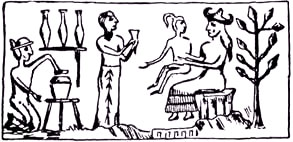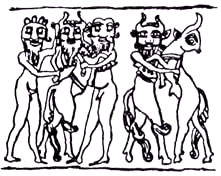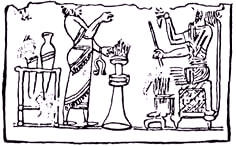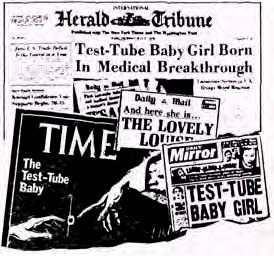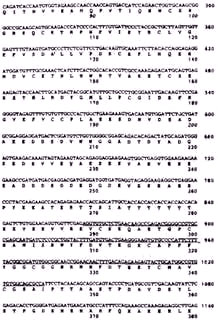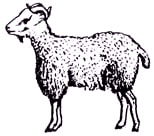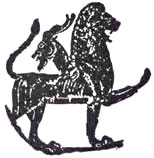|
8 - THE ADAM: A SLAVE MADE TO ORDER
This is the tale of Man’s creation as told in chapter 2, verse 7 of the Book of Genesis—according to the King James English version; and this is what the Creationist zealots firmly believe.
The biblical account is further complicated by the ensuing tale in Chapter 2, according to which “The Adam” was alone until God provided him with a female counterpart, created of Adam’s rib.
What, those who believe in the Bible must ask, is going on here? As both Orientalists and Bible scholars now know, what went on was the editing and summarizing by the compilers of the Book of Genesis of much earlier and considerably more detailed texts first written down in Sumer.
Those texts, reviewed and extensively quoted in The 12th Planet with all sources listed, relegate the creation of Man to the Anunnaki. It happened, we learn from such long texts as Atra Hasis, when the rank-and-file astronauts who had come to Earth for its gold mutinied. The backbreaking work in the gold mines, in southeast Africa, had become unbearable. Enlil, their commander in-chief, summoned the ruler of Nibiru, his father Anu, to an Assembly of the Great Anunnaki and demanded harsh punishment of his rebellious crew. But Anu was more understanding. “What are we accusing them of?” he asked as he heard the complaints of the mutineers. “Their work was heavy, their distress was much!” Was there no other way to obtain the gold, he wondered out loud.
The idea appealed to the assembled Anunnaki. The more they discussed it, the more clear their clamor grew for such a Primitive Worker, an Adamu, to take over the work load. But, they wondered, how can you create a being intelligent enough to use tools and to follow orders? How was the creation or “bringing forth,” of the Primitive Worker to be achieved? Was it, indeed, a feasible undertaking?
In these words lies the key to the puzzle of Man’s creation, the magical wand that removes the conflict between Evolution and Creationism. The Anunnaki, the Elohim of the biblical verses, did not create Man from nothing. The being was already there, on Earth, the product of evolution. All that was needed to upgrade it to the required level of ability and intelligence was to “bind upon it the image of the gods,” the image of the Elohim themselves.
The biblical use of the plural pronoun and the depiction of a
group of Elohim reaching a consensus and following it up with the
necessary action also lose their enigmatic aspects when the
Mesopotamian sources are taken into account. In them we read that the assembled Anunnaki resolved lo proceed with the project, and on Enki’s suggestion assigned the task to Ninti, their chief medical officer:
One cannot say for certain whether it was from the Atra Hasis text, from which the above lines are quoted, or from much earlier Sumerian texts that the editors of Genesis got their abbreviated version. But we have here the background of events that led to the need for a Primitive Worker, the assembly of the gods and the suggestion and decision to go ahead and have one created. Only by realizing what the biblical sources were can we understand the biblical tale of the Elohim—the Lofty Ones, the “gods”—saying:
In The 12th Planet it was stressed that until the Bible begins to relate the genealogy and history of Adam, a specific person, the Book of Genesis refers to the newly created being as “The Adam,” a generic term. Not a person called Adam, but, literally, “the Earthling,” for that is what “Adam” means, coming as it does from the same root as Adamah, “Earth.” But the term is also a play on words, specifically dam, which means “blood ” and reflects, as we shall soon see, the manner in which The Adam was “manufactured.”
The word lulu in a more profound sense thus meant “the mixed one.” This also reflected the manner in which The Adam—“Earthling” as well as “He of the blood”—was created. Numerous texts in varying states of preservation or fragmentation have been found inscribed on Mesopotamian clay tablets. In sequels to The 12th Planet the creation “myths” of other peoples, from both the Old and New Worlds, have been reviewed; they all record a process involving the mixing of a godly element with an earthly one. As often as not, the godly element is described as an “essence” derived from a god’s blood, and the earthly element as “clay” or “mud.”
There can be no doubt that they all attempt to tell the same tale, for they all speak of a First Couple. There is no doubt that their origin is Sumerian, in whose texts we find the most elaborate descriptions and the greatest amount of detail concerning the wonderful deed: the mixing of the “divine” genes of the Anunnaki with the “earthly” genes of Apeman by fertilizing the egg of an Apewoman.
Figure 51 There is reason to believe that when Enki made the surprising suggestion to create a Primitive Worker through genetic manipulation, he had already concluded that the feat was possible. His suggestion to call in Ninti for the task was also not a spur of-the-moment idea.
As scientists do today, Enki, too, must have contemplated the course of evolution on Earth. As reflected in the Sumerian texts, he came to the conclusion that the same “seed of life” that Nibiru had brought with it from its previous celestial abode had given rise to life on both planets; much earlier on Nibiru, and later on Earth, once the latter had been seeded by the collision. The being that surely fascinated him most was Apeman—a step above the the other primates, a hominid already walking erect and using sharpened stones as tools, a proto-Man—but not yet a fully evolved human. And Enki must have toyed with the intriguing challenge of “playing God” and conducting experiments in genetic manipulation.
The three of them were children of Anu, the ruler of Nibiru, but not of the same mother; and according to the succession rules of the Anunnaki (later adopted by the Sumerians and reflected in the biblical tales of the Patriarchs), it was not necessarily the Firstborn son but a son born by a half sister from the same royal line who became the Legal Heir. Sumerian texts describe torrid lovemaking between Enki and Ninti (with unsuccessful results, though: the offspring were all females); there was thus more than an interest in science that led to Enki’s suggestion to call in Ninti and assign the task to her.
Some ancient depictions show “Bull-Men” accompanied by naked Ape-men (Fig. 52) or Bird-Men (Fig. 53). Sphinxes (bulls or lions with human heads) that adorned many ancient temples may have been more than imaginary representations; and when Berossus, the Babylonian priest, wrote down Sumerian cosmogony and tales of creation for the Greeks, he described a prehuman period when “men appeared with two wings,” or “one body and two heads,” or with mixed male and female organs, or “some with the legs and horns of goats” or other hominid-animal mixtures.
Figure
52
Having reached this stage, where genetic manipulation was sufficiently perfected to enable the determination of the resulting body’s good or bad aspects, the two felt they could master the final challenge: to mix the genes of hominids. Apemen, not with those of other Earth creatures but with the genes of the Anunnaki themselves. Using all the knowledge they had amassed, the two Elohim set out to manipulate and speed up the process of Evolution. Modern Man would have undoubtedly eventually evolved on Earth in any case, just as he had done on Nibiru, both having come from the same “seed of life.”
But there was still a long way and a long time to go from the stage hominids were at 300,000 years ago to the level of development the Anunnaki had reached at that time. If, in the course of 4 billion years, the evolutionary process had been earlier on Nibiru just 1 percent of that time, Evolution would have been forty million years ahead on Nibiru compared with the course of evolution on Earth.
Did the Anunnaki jump the gun on evolution on our planet by a million or two million years? No one can say for sure how long it would have taken Homo sapiens to evolve naturally on Earth from the earlier hominids, but surely forty million years would have been more than enough time.
In The 12th Planet, I analyzed the etymology of the Sumerian and Akkadian terms that are usually translated “clay” or “mud” and showed that they evolved from the Sumerian TI.IT, literally, “that which is with life,” and then assumed the derivative meanings of “clay” and “mud,” as well as “egg.” The earthly element in the procedure for “binding upon” a being who already existed “the image of the gods” was thus to be the female egg of that being—of an Apewoman. All the texts dealing with this event make it clear that Ninti relied on Enki to provide the earthly element, this egg of a female Apewoman, from the Abzu, from southeast Africa.
Indeed, the specific location is given in the above quote: not exactly the same site as the mines (an area identified in The 12th Planet as Southern Rhodesia, now Zimbabwe) but a place “above” it, farther north. This area was, indeed, as recent finds have shown, where Homo sapiens emerged... The task of obtaining the “divine” elements was Ninti’s. Two extracts were needed from one of the Anunnaki, and a young “god” was carefully selected for the purpose. Enki’s instructions to Ninti were to obtain the god’s blood and shiru, and through immersions in a “purifying bath” obtain their “essences.”
What had to be obtained from the blood was termed TE.E.MA, at best translated “personality,” a term that expresses the sense of the word: that which makes a person what he is and different from any other person. But the translation “personality” does not convey the scientific precision of the term, which in the original Sumerian meant “That which houses that which binds the memory.” Nowadays we call it a “gene.”
The place where these procedures were carried out was a special structure called in Akkadian Bit Shimti, which, coming from the Sumerian SHI.IM.TI literally meant “house where the wind of life is breathed in”—the source, no doubt, of the biblical assertion that after having fashioned the Adam from the clay, Elohim “blew in his nostrils the breath of life.”
The biblical term, sometimes translated “soul ” rather than “breath of life,” is Nephesh. The identical term appears in the Akkadian account of what took place in the “house where the wind of life is breathed in” after the purifying and extracting procedures were completed:
A depiction on a cylinder seal (Fig. 54) may well have illustrated the ancient text. It shows Enki seated, “prompting” Ninti (who is identified by her symbol, the umbilical cord), with the “test-tube” flasks behind her.
Figure 54 The fertilized and “molded” egg was to be reimplanted in a female womb—but not in that of its original Apewoman. Rather, it was to be implanted in the womb of a “goddess,” an Anunnaki female! Only thus, it becomes clear, was the end result achievable.
The female Anunnaki chosen to serve as Birth Goddesses if the experiment succeeded, Enki said, should stay and observe what was happening. It was not, the texts reveal, a simple and smooth birth-giving process:
The drama of Man’s creation, it appears, was compounded by a late birth; medical intervention was called for. Realizing what had to be done, Ninti “covered her head” and, with an instrument whose description was damaged on the clay tablet, “made an opening.” This done, “that which was in the womb came forth.” Grabbing the newborn baby, she was overcome with joy. Lifting it up for all to see (as depicted in Fig. 51), she shouted triumphantly:
Figure 51
The successful birth of The Adam—by himself, as the first biblical version states—confirmed the validity of the process and opened the way for the continuation of the endeavor. Now, enough “mixed clay” was prepared to start pregnancies in fourteen birth goddesses at a time:
There is thus no conflict among the Bible’s various versions of Man’s creation. First, The Adam was created by himself; but then, in the next phase, the Elohim indeed created the first humans “male and female.”
Until a few decades ago all that science was aware of was that there are sets of chromosomes lurking within every living cell that impart both the physical and mental/ emotional characteristics to offspring. But now we know that the chromosomes are just stems on which long strands of DNA are positioned. With only four nucleotides at its disposal, the DNA can be sequenced in endless combinations, in short or long stretches interspersed with chemical signals that can mean “stop” or “go” instructions (or, it seems, to do nothing at all anymore).
Enzymes are produced and act as chemical busybodies, launching chemical processes, sending off RNAs to do their job, creating proteins to build body and muscles, produce the myriad differentiated cells of a living creature, trigger the immune system, and, of course, help the being procreate by bringing forth offspring in its own image and after its likeness.
To achieve cloning, the chromosomes in the ovum must be removed surgically and a complete set of pairs inserted instead, not from a male sperm but from any other human cell. If all succeeds and the egg, nestled in the womb, becomes first an embryo, then a fetus and then a baby—the baby will be identical to the person from whose single cell it has grown. There were other problems inherent in the process, too technical to detail here, but they were slowly overcome with the aid of experimentation, improved instruments, and progress in understanding genetics. One intriguing finding that aided the experiments was that the younger the source of the transplanted nucleus the better the chances of success. In 1975 British scientists succeeded in cloning frogs from tadpole cells; the procedure required the removal of a frog egg’s nucleus and its replacement with a tadpole cell’s nucleus.
This was achieved by microsurgery, possible because the cells in question are considerably larger than, say, human cells. In 1980 and 1981 Chinese and American scientists claimed to have cloned fish with similar techniques; flies were also experimented on. When the experiments shifted to mammals, mice and rabbits were chosen because of their short reproductive cycles. The problem with mammals was not only the complexity of their cells and cell nuclei but also the need to nestle the fertilized egg in a womb. Better results were obtained when the egg’s nucleus was not removed surgically but was inactivated by radiation; even better results followed when this nucleus was “evicted” chemically and the new nucleus also introduced chemically; the procedure, developed through experiments on rabbit eggs by J. Derek Bromhall of Oxford University, became known as Chemical Fusion.
In order to prevent the sperm’s male chromosomes from merging with the egg’s female chromosomes (which would have resulted in a normal fertilization rather than in cloning), one set had to be removed surgically just before the merger began and the remaining set “excited” by physical or chemical means to double itself. If the sperm’s chromosomes were chosen for the latter role, the embryo might become either male or female; if the egg’s set were chosen and duplicated, the embryo could only be female.
While Markert was continuing his experiments on such methods of nuclear transfer, two other scientists (Peter C. Hoppe and Karl Illmensee) announced in 1977 the successful birth, at the Jackson Laboratory in Bar Harbor, Maine, of seven “single-parent mice.” The process, however, was more accurately designated parthenogenesis, “virgin birth,” than cloning; since what the experimenters did was to cause the chromosomes in the egg of a female mouse to double, keep the egg with the full set of chromosomes in certain solutions, and then, after the cell had divided several times, introduce the self-fertilized cell into the womb of a female mouse.
Significantly, the recipient mouse had to be a different female, not the mouse whose own egg had been used. Quite a stir was caused early in 1978 by the publication of a book that purported to relate how an eccentric American millionaire, obsessed by the prospect of death, sought immortality by arranging to be cloned. The book claimed that the nucleus of a cell taken from the millionaire was inserted into a female egg, which was carried through pregnancy to a successful birth by a female volunteer; the boy, fit and healthy in all respects, was reported at the time of publication to have been fourteen months old. Though written as a factual report, the tale was received with disbelief.
The scientific community’s skepticism stemmed not from the impossibility of the feat—indeed, that it would one day be possible almost all concerned agreed—but from doubts whether the feat could have been achieved by an unknown group in the Caribbean when the best researchers had only, at that time, achieved the virgin birth of mice. There was also doubt about the successful cloning of a male adult, when all the experiments had indicated that the older the donor’s cell, the lower the chances of success.
With the memory of the horrors inflicted on Mankind by Nazi Germany in the name of a “master race” still fresh, even the possibility of cloning selected humans for evil purposes (a theme of Ira Levin’s best-selling novel The Boys from Brazil) was reason enough to dampen interest in this avenue of genetic manipulation. One alternative, which substituted the “Should man play God?” outcry with what one might call the “Can science play husband?” idea, was the process that led to the phenomenon of “Test-tube babies.”
The first of many other test-tube babies, she was conceived in a test tube, not by her parents but by techniques employed by Doctors Patrick Steptoe and Robert Edwards. Nine months earlier they had used a device with a light at its end to suck out a mature egg from Mrs. Brown’s ovary. Bathed in a dish containing life-support nutrients, the extracted egg was “mixed”—the word was used by Dr. Edwards—with the husband’s sperm.
Once a sperm succeeded in fertilizing the egg, the egg was transferred to a dish containing other nutrients, where it began to divide. After fifty hours it had reached an eight-celled division; at that point, the egg was re-implanted in Mrs. Brown’s womb. With care and special treatment, the embryo developed properly; a caesarean delivery completed the feat, and a couple who before this could not have a child because of the wife’s defective fallopian tubes now had a normal daughter.
Also reminiscent of the ancient reports of the long road of trial and error taken by Enki and Ninti was the fact that the Baby Louise “breakthrough” about which the media went wild (Fig. 55) came after twelve years of trial and error, in the course of which fetuses and even babies turned out defective.
Figure 55 Although the feat gave new hope to barren women (it also opened the way to surrogate motherhood, embryo freezing, semen banks, and new legal entanglements), it was just a distant cousin of the feat accomplished by Enki and Ninti. Yet it had to employ the techniques of which we have read in the ancient texts—just as the scientists engaged in nucleus transfers have found that the male donor must be young, as the Sumerian texts have stressed.
Scientists have also found that some of the code’s “words” simply act to instruct the replication process where to start and when to stop. Gradually, scientists have become able to transcribe the genetic code to a computer screen and to recognize in the printouts (Fig. 56) the “stop” and “go” signs. The next step was to tediously find out the function of each segment, or gene—of which the simple E. coli bacterium has about 4,000 and human beings well over 100,000.
Plans are now afoot to “map” the complete human genetic makeup (“Genome”); the enormity of the task, and the extent of the knowledge already gained, can be appreciated by the fact that if the DNA in all human cells were extracted and put in a box, the box need be no bigger than an ice cube; but if the twisting strands of DNA were stretched out, the string would extend 47 million miles...
Figure 56
The advances in understanding and manipulating this fundamental chemistry of life were recognized in 1980 with the award of the Nobel prize in chemistry to Walter Gilbert of Harvard and Frederick Sanger of Cambridge University for the development of rapid methods for reading large segments of DNA, and to Paul Berg of Stanford University for pioneering work in “gene splicing.”
Another term used for the procedures is “Recombinant DNA technology,” because after the splicing, the DNA is recombined with newly introduced segments of DNA. These capabilities have made possible gene therapy, the removal from or correction within human cells of genes causing inherited sicknesses and defects. It has also made possible Biogenetics: inducing, through genetic manipulation, bacteria or mice to manufacture a needed chemical (such as insulin) for medical treatment. Such feats of recombinant technology are possible because all the DNA in all living organisms on Earth is of the same makeup, so that a strand of bacteria DNA will accept (“recombine” with) a segment of human DNA.
(Indeed, American and Swiss researchers reported in July 1984 the discovery of a DNA segment that was common to human beings, flies, earthworms, chickens, and frogs—further corroboration of the single genetic origin of all life on Earth.)
Hybrids such as a mule, which is the progeny of a donkey and a horse, can be born from the mating of the two because they have similar chromosomes (hybrids, however, cannot procreate). A sheep and a goat, though not too distant relatives, cannot naturally mate; however, because of their genetic kinship, experiments have brought them together to form (in 1983) a “geep” (Fig. 57)—a sheep with its woolly coat but with a goat’s horns.
Such mixed, or “mosaic,” creatures are called chimeras, after the monster in Greek mythology that had the forepart of a lion, the middle of a goat, and the tail of a dragon (Fig. 58). The feat was attained by “Cell Fusion,” the fusing together of a sheep embryo and a goat embryo at the stage of their early divisions into four cells each, then incubating the mixture in a test tube with nutrients until it was time to transfer the mixed embryo to the womb of a sheep that acted as a surrogate mother.
Figure 57
The advances in genetics have provided biotechnology with other routes than the unpredictable chimera route; it is evident that in doing so, modern science has followed the alternate (though more difficult) course of action undertaken by Enki and Ninti. By cutting out and adding on pieces of the genetic strands, or Recombinant Technology, the traits to be omitted, added, or exchanged can be specified and targeted.
Some of the landmarks along this progress in genetic engineering were the transfer of bacterial genes to plants to make the latter resistant to certain diseases and, later (in 1980), of specific bacteria genes into mice. In 1982 growth genes of a rat were spliced into the genetic code of a mouse (by teams headed by Ralph L. Brinster of the University of Pennsylvania and Richard D. Palmiter of Howard Hughes Medical Institute), resulting in the birth of a “Mighty Mouse” twice the size of a normal mouse. In 1985 it was reported in Nature (June 27) that experimenters at various scientific centers had succeeded in inserting functioning human growth genes into rabbits, pigs, and sheep; and in 1987 (New Scientist, September 17) Swedish scientists likewise created a Super-Salmon.
By now, genes carrying other traits have been used in such “trans-genic” recombinations between bacteria, plants, and mammals. Techniques have even progressed to the artificial manufacture of compounds that perfectly emulate specific functions of a given gene, mainly with a view to treating diseases. In mammals, the altered fertilized female egg ultimately must be implanted in the womb of a surrogate mother—the function that was assigned, according to the Sumerian tales, to the “Birth Goddesses.” But before that stage, a way had to be found to introduce the desired genetic traits from the male donor into the egg of the female participant.
The most common method is micro-injection, by which a female egg, already fertilized, is extracted and injected with the desired added genetic trait; after a short incubation in a glass dish, the egg is reimplanted in a female womb (mice, pigs, and other mammals have been tried). The procedure is difficult, has many hurdles, and results in only a small percentage of successes—but it works. Another technique has been the use of viruses, which naturally attack cells and fuse with their genetic cores: the new genetic trait to be transferred into a cell is attached by complex ways to a virus, which then acts as the carrier; the problem here is that the choice of the site on the chromosome stem to which the gene is to be attached is uncontrollable, and in most cases chimeras have resulted.
Little is it realized that the technique had been reported even earlier, in Sumerian texts describing the creation of The Adam by Enki and Ninti, who had mixed the Apewoman’s egg in a test tube with the sperm of a young Anunnaki in a solution also containing blood serum. In 1987 the dean of anthropology at the University of Florence, Italy, raised a storm of protests by clergymen and humanists when he revealed that ongoing experiments could lead to the “creation of a new breed of slave, an anthropoid with a chimpanzee mother and a human father.” One of my fans sent me the clipping of the story with the comment, “Well, Enki, here we go again!”
WASPS, MONKEYS, AND BIBLICAL PATRIARCHS
Though not the whole truth it was not a lie, as explained in Genesis 20:12:
Abraham’s successor was not the firstborn Ishmael, whose mother was the handmaiden Hagar, but Isaac, the son of the half sister Sarah, though he was born much later. The strict adherence to these succession rules in antiquity in all royal courts, whether in Egypt of the Old World or in the Inca empire in the New World, suggest some “bloodline,” or genetic, assumption that appears odd and contrary to the belief that mating with close relatives is undesirable. But did the Anunnaki know something modern science has yet to discover?
Discover magazine (December 1988) reported studies showing that “male wasps ordinarily mate with their sisters.” Since one male wasp fertilizes many females, the preferential mating was found to be with half sisters: same father but different mother.
|
